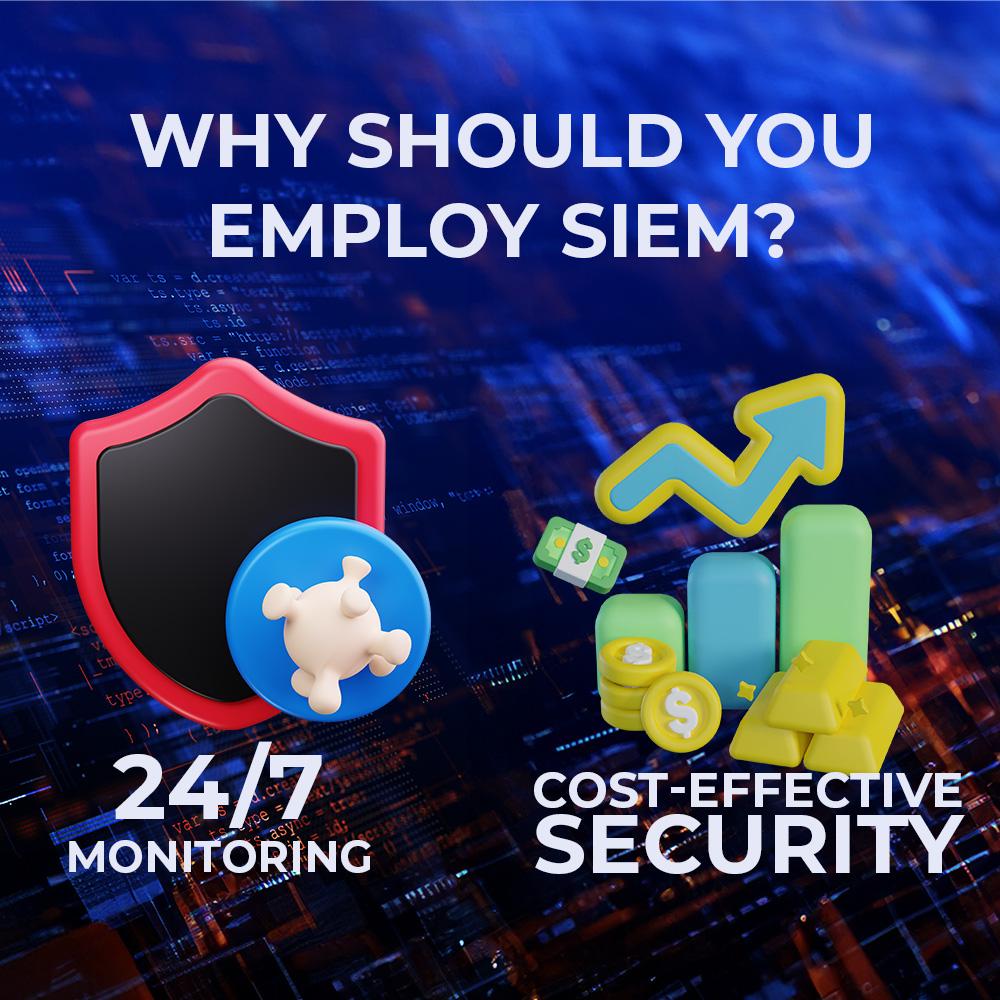Imagine this: Your SIEM (Security Information and Event Management) system is collecting mountains of security data every second. Alerts are firing off, logs are being generated, and reports are piling up. But here’s the real question—are you actually using this data effectively? Or are you drowning in irrelevant alerts and missing the real threats?
This is where custom SIEM reports come in. They allow you to tailor your security monitoring, cut through the noise, and focus on what truly matters—detecting threats, ensuring compliance, and optimizing cybersecurity operations.Whether you’re an IT admin, a SOC analyst, or a business leader, understanding how to build and leverage custom SIEM reports can take your security game to the next level.
What Are Custom SIEM Reports and Why Do They Matter?
A custom SIEM report is a tailored security report that pulls relevant data from various logs, filters out unnecessary noise, and presents actionable insights. Unlike default reports that provide generic information, custom reports zero in on specific threats, compliance needs, or operational concerns—giving your team the intelligence they need to make faster, smarter security decisions.
Think of it like tuning a radio—default reports might give you static and random channels, but custom SIEM reports tune into the exact frequency of security data you need.

Benefits of Custom SIEM Reports
If you’re still relying on default SIEM reports, here’s what you’re missing out on:
🚀 Enhanced Threat Detection & Faster Incident Response
- Identify anomalous user behavior and advanced persistent threats (APTs)
- Reduce false positives and focus on real security threats
- Get real-time alerts and actionable insights to stop attacks before they escalate
📜 Effortless Compliance & Audit Reporting
- Meet regulatory requirements like GDPR, HIPAA, PCI DSS, SOC 2, and ISO 27001
- Automate reports for audit readiness and avoid compliance headaches
- Show executives and stakeholders the ROI of your security investments
⚙️ Improved Operational Efficiency
- Cut through log noise and eliminate alert fatigue
- Optimize SOC workflows and streamline incident investigation
- Gain visibility into network performance issues
📊 Actionable Business Insights
- Track employee cybersecurity behavior (e.g., unauthorized login attempts, access violations)
- Understand network traffic patterns and bandwidth usage
- Identify potential security risks in cloud environments
Types of Custom SIEM Reports You Need to Implement
Custom SIEM reports can be designed for different security needs. Here are some essential ones you should be using:
Threat Intelligence Reports
- Track Indicators of Compromise (IoCs)
- Identify high-risk IP addresses and geolocations of attacks
- Monitor known malicious domains and URLs
Incident Response Reports
- Get a detailed breakdown of security incidents
- Analyze attack vectors and affected systems
- Generate an incident timeline for forensics
User Behavior Analytics (UBA) Reports
- Detect privileged account abuse
- Identify unusual login patterns
- Monitor insider threats and compromised accounts
Compliance & Audit Reports
- Track log retention and access history
- Monitor system authentication logs
- Generate reports for regulatory audits
Network Traffic & Anomaly Reports
- Identify unusual outbound connections
- Monitor network bandwidth usage
- Detect DDoS attack attempts
Cloud Security Reports
- Detect misconfigurations in AWS, Azure, or Google Cloud
- Monitor unauthorized API calls
- Analyze cloud access logs
How to Create Custom SIEM Reports That Deliver Real Insights
Define Your Security Objectives
Start by asking:
✔️ What are the biggest security risks my organization faces?
✔️ What data sources do I need to monitor?
✔️ What compliance frameworks must I adhere to?
Your SIEM reports should align with your business and security goals—whether it’s catching insider threats, meeting compliance standards, or improving response times.
Choose the Right Data Sources
A powerful SIEM report pulls data from multiple sources, such as:
🔹 Firewalls
🔹 Intrusion Detection Systems (IDS)
🔹 Endpoint Security Tools
🔹 Cloud Security Logs
🔹 Identity & Access Management (IAM) Systems
The more comprehensive and relevant your log data, the more precise and useful your report will be.
Use Custom Queries & Correlation Rules
Default SIEM alerts can overwhelm you with false positives. To filter out noise, create custom correlation rules that:
✅ Detect repeated login failures from a single IP
✅ Flag suspicious privilege escalations
✅ Identify data exfiltration attempts
Automate & Schedule Reports
Your SOC team shouldn’t be buried in manual report generation. Schedule SIEM reports to run:
📅 Daily (for real-time threat monitoring)
📅 Weekly (for compliance tracking)
📅 Monthly (for executive security reviews)
Visualize the Data for Better Insights
A raw data dump won’t help anyone. Use heatmaps, graphs, and dashboards to:
📌 Identify trends in attack frequency
📌 Track high-risk regions and devices
📌 Pinpoint system vulnerabilities
Best Practices for Custom SIEM Reporting
✔️ Keep Reports Actionable: Avoid information overload—focus on relevant security events.
✔️ Update Reports Regularly: Cyber threats evolve; adapt your SIEM reports accordingly.
✔️ Ensure Data Accuracy: Garbage data = garbage insights. Validate log sources.
✔️ Role-Based Access Controls: Ensure only authorized personnel can access sensitive reports.
✔️ Test and Optimize: Run test reports to see if they catch real threats and provide meaningful insights.
Overcoming Challenges in Custom SIEM Reporting
🚧 Data Overload? Use smart filtering and correlation rules.
🚧 False Positives? Fine-tune alert thresholds and suppression rules.
🚧 Complexity? Invest in training your SOC team on query building and SIEM customization.
🚧 Integration Issues? Choose SIEM solutions that seamlessly integrate with existing security tools.
Final Thoughts: Elevate Your Security with Custom SIEM Reports
A SIEM system is only as good as the insights you extract from it. By implementing custom SIEM reports, you can stop drowning in irrelevant alerts and start focusing on real threats.
🔹 Want to enhance your threat detection? Build tailored SIEM reports.
🔹 Need to streamline compliance audits? Automate compliance reports.
🔹 Looking to improve incident response times? Customize security event reports.
The key to better cybersecurity is better visibility—and custom SIEM reports give you exactly that.
🚀 Ready to take control of your security data? Start building custom SIEM reports today! 🚀
Cybersecurity for Business
Your business faces constantly evolving cyber threats that can jeopardize sensitive data, disrupt operations, and damage your reputation. Our cybersecurity for business solutions are tailored to meet the unique challenges of companies of all sizes, providing robust protection against malware, phishing, ransomware, and more.
Whether you’re a small startup or a large enterprise, we offer multi-license cybersecurity packages that ensure seamless protection for your entire team, across all devices. With advanced features like real-time threat monitoring, endpoint security, and secure data encryption, you can focus on growing your business while we handle your digital security needs.
Get a Free Quote Today! Safeguard your business with affordable and scalable solutions. Contact us now to request a free quote for multi-license cybersecurity packages designed to keep your company safe and compliant. Don’t wait—protect your business before threats strike!





